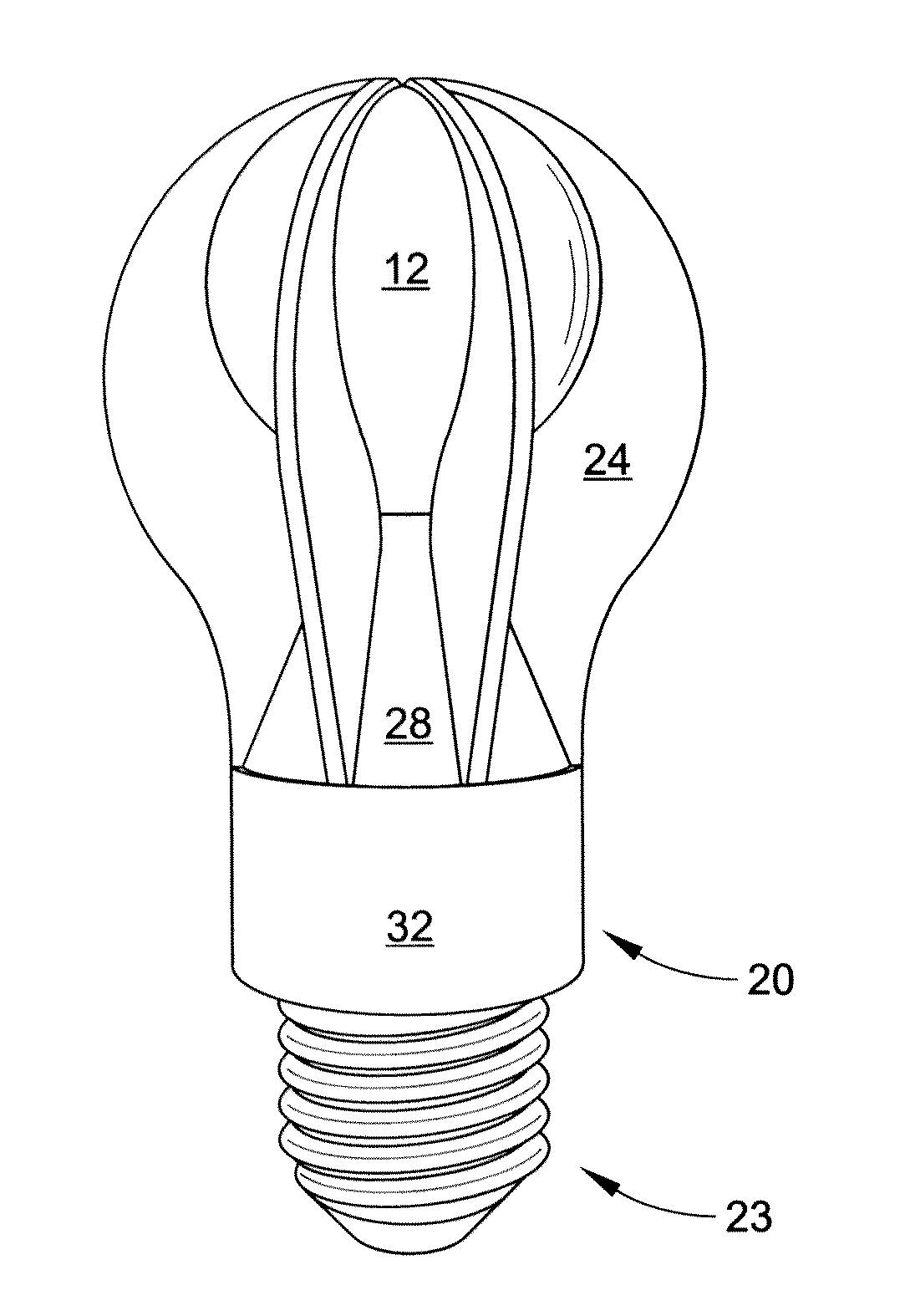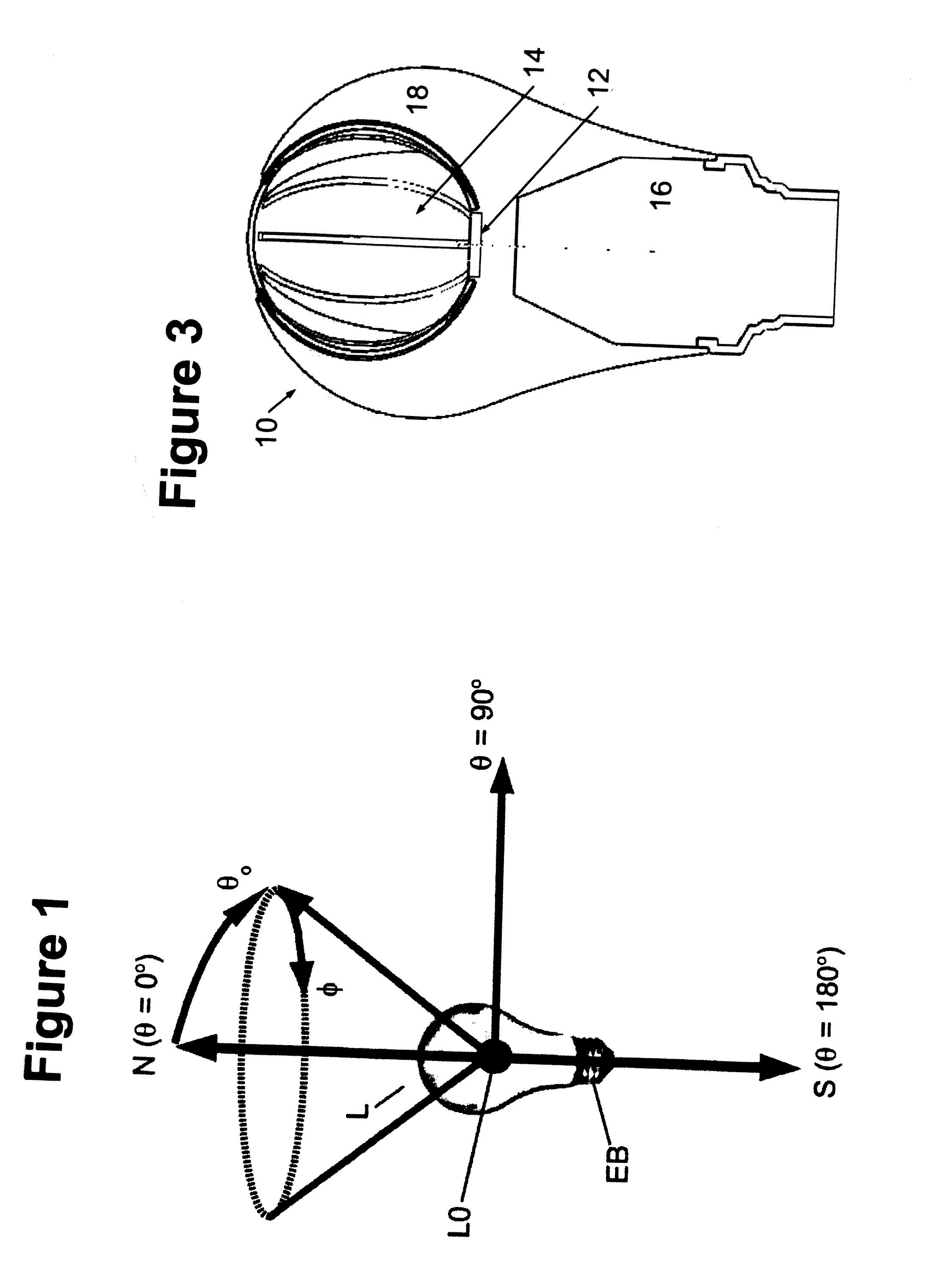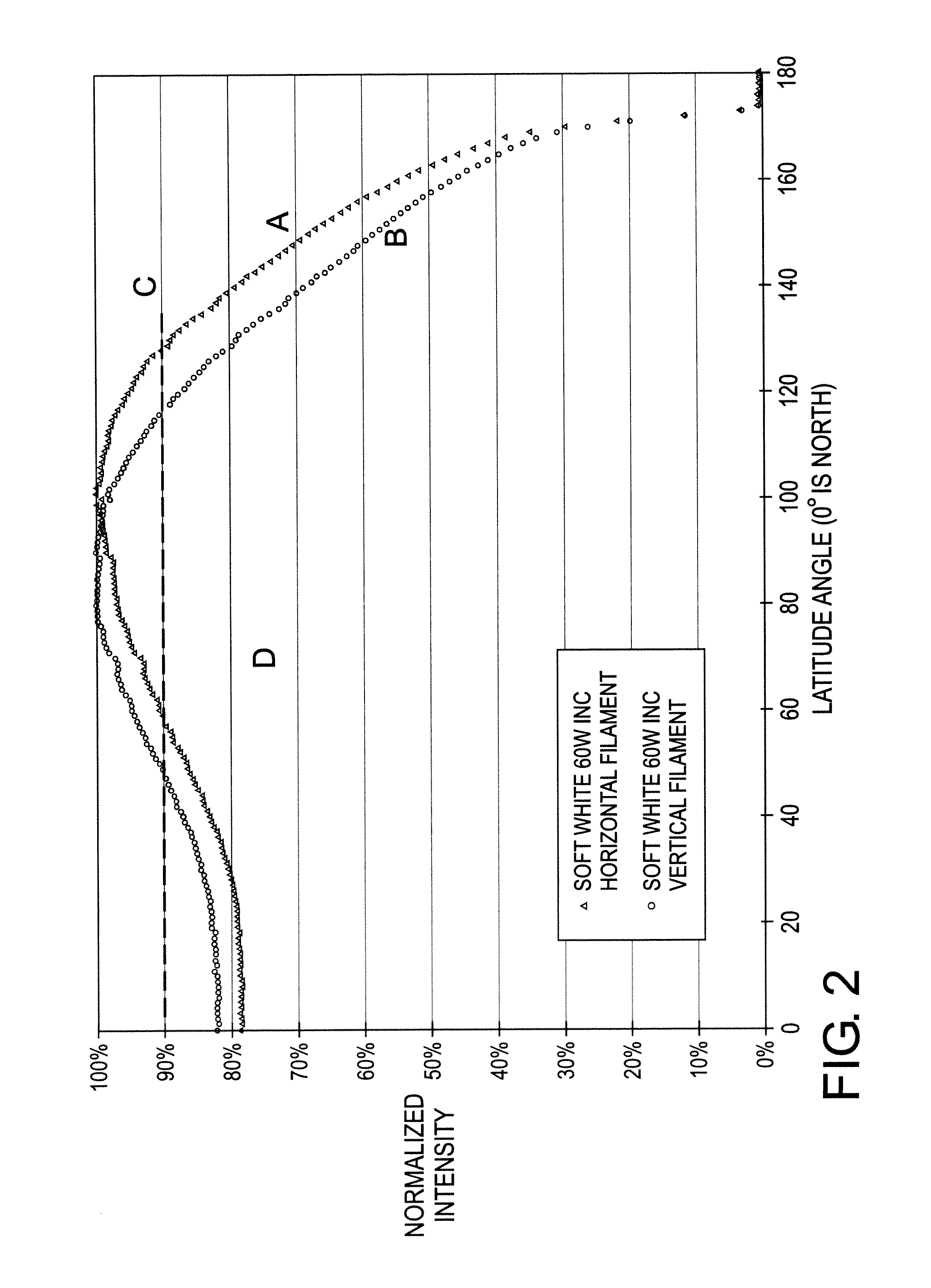LED lamp
a technology of led chips and solid-state lighting devices, which is applied in the direction of discharge tube main electrodes, semiconductor devices for light sources, lighting and heating apparatus, etc., can solve the problems of reduced power efficiency, inability to achieve ideal omnidirectional intensity respective to elevational or latitude coordinates, and inability to efficiently operate led chips or other solid-state lighting devices using standard 110v or 220v a.c. power, etc., to achieve adequate thermal dissipation
- Summary
- Abstract
- Description
- Claims
- Application Information
AI Technical Summary
Benefits of technology
Problems solved by technology
Method used
Image
Examples
Embodiment Construction
[0043]The performance of an LED replacement lamp can be quantified by its useful lifetime, as determined by its lumen maintenance and its reliability over time. Whereas incandescent and halogen lamps typically have lifetimes in the range ˜1000 to 5000 hours, LED lamps are capable of >25,000 hours, and perhaps as much as 100,000 hours or more.
[0044]The temperature of the p-n junction in the semiconductor material from which the photons are generated is a significant factor in determining the lifetime of an LED lamp. Long lamp life is achieved at junction temperatures of about 100° C. or less, while severely shorter life occurs at about 150° C. or more, with a gradation of lifetime at intermediate temperatures. The power density dissipated in the semiconductor material of a typical high-brightness LED circa year 2009 (˜1 Watt, ˜50-100 lumens, ˜1×1 mm square) is about 100 Watt / cm2. By comparison, the power dissipated in the ceramic envelope of a ceramic metal-halide (CMH) arctube is ty...
PUM
 Login to View More
Login to View More Abstract
Description
Claims
Application Information
 Login to View More
Login to View More - R&D
- Intellectual Property
- Life Sciences
- Materials
- Tech Scout
- Unparalleled Data Quality
- Higher Quality Content
- 60% Fewer Hallucinations
Browse by: Latest US Patents, China's latest patents, Technical Efficacy Thesaurus, Application Domain, Technology Topic, Popular Technical Reports.
© 2025 PatSnap. All rights reserved.Legal|Privacy policy|Modern Slavery Act Transparency Statement|Sitemap|About US| Contact US: help@patsnap.com



